The Secrets of Sanzu Temple: A Traveler’s Guide to Japan’s Sacred Sanctuary
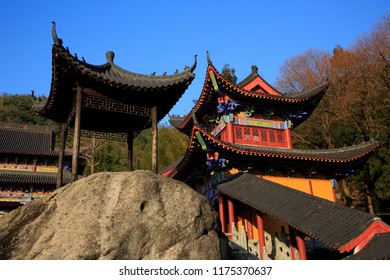
An Essential Guide to Visiting Sanzu Temple
Nestled within the breathtaking landscapes of Fengxing Mountain, Sanzu Temple stands as a testament to the rich tapestry of Chinese history and spirituality. This revered site, founded during the Southern Dynasty, is not just an architectural marvel but also a cultural treasure where the echoes of ancient Zen teachings resonate. As you approach the temple, the striking metamorphic rock formations and lush botanical gardens envelop you in a serene embrace, inviting you to explore its sacred halls and captivating surroundings.
Sanzu Temple is steeped in historical significance, having once welcomed notable scholars and poets who sought inspiration from its tranquil beauty. The temple’s architecture harmonizes with nature, featuring intricate designs that reflect the harmonious principles of Chinese aesthetics. From the majestic Jueji Pagoda to the expansive Thousand Buddha Hall, each structure tells a story that dates back centuries, offering a glimpse into the spiritual journey of Zen Buddhism in China.
Visitors are treated to a visual feast as the scenery shifts with every step—from the lush cypress trees to the picturesque views of nearby peaks. With its blend of cultural heritage and natural splendor, Sanzu Temple promises an unforgettable experience for international travelers seeking to immerse themselves in the profound essence of Chinese spirituality and history. Whether you are a history buff, a nature lover, or simply in search of a peaceful retreat, Sanzu Temple is a must-visit destination that will leave an indelible mark on your journey through Anhui Province.
In This Guide
- An Essential Guide to Visiting Sanzu Temple
- The Rich History and Legends of Sanzu Temple
- Main Highlights: What You Absolutely Can’t Miss
- Planning Your Visit: A Practical Guide
- Tickets: Prices, Booking, and Tips
- How to Get There: A Complete Transportation Guide
- Local Cuisine and Accommodation Nearby
- Frequently Asked Questions
- Final Thoughts on Your Trip
The Rich History and Legends of Sanzu Temple
Nestled in the picturesque Fengxing Mountain of Anhui Province, Sanzu Temple (三祖寺) is not merely a place of worship; it is a vibrant tapestry woven with the threads of history and legend that stretches back over a millennium. Its very location, at the neck of a mountain that resembles a phoenix in flight, adds to the temple’s mystique and allure.
The roots of Sanzu Temple trace back to the Southern Dynasty, founded by the esteemed Zen Master Baozhi, who originally named it Shan Gu Temple. Its significance grew when Emperor Wu of Liang recognized its importance, further solidifying its status in the Buddhist community. The temple gained prominence in the early Sui Dynasty when Sengcan, the third patriarch of Zen Buddhism, visited to impart his teachings. This visit marked a pivotal moment in the temple’s history, as Sengcan passed on his robe and bowl to his disciple Daoxin, thus establishing a lineage that would see the temple flourish.
In 606 AD, the temple officially adopted its name, Sanzu Temple, and its reputation only grew in the following centuries. Throughout the Tang Dynasty, emperors continued to honor its legacy. Emperor Suzong named it Sanzu Shan Gu Qianyuan Zen Temple, while his successor, Emperor Daizong, posthumously recognized Sengcan as Master Jianzhi Zen Master, adding to the temple’s illustrious history with the Jueji Pagoda built in his honor.
The temple attracted a multitude of scholars and poets, especially during the Northern Song Dynasty. Notable figures such as Lin Bu, Wang Anshi, Su Dongpo, and Huang Tingjian not only visited but also left their poetic impressions on the temple’s walls. These luminaries found inspiration in the serene beauty of the temple and its surroundings, with one poet famously stating, “Who is the best in the Zen forest? This place is the best in the south.” Such accolades cemented Sanzu Temple’s reputation as a hub of intellectual and spiritual enlightenment.
Today, the temple’s architecture reflects traditional Chinese design, harmoniously integrating structures with the natural landscape. Visitors can explore significant halls like the Mountain Gate Hall, the Heavenly King Hall, and the Mahavira Hall, each echoing the profound spiritual heritage that continues to attract pilgrims and tourists alike. The scenic backdrop, including Baihe Peak and the ancient cypress trees, enhances the experience, creating a serene atmosphere for contemplation and reflection.
The legends and history of Sanzu Temple not only illustrate its importance in the Zen Buddhist tradition but also highlight its role as a cultural touchstone in Chinese history. Every stone and inscription tells a story, inviting those who visit to become part of its rich narrative, a narrative that continues to evolve while remaining deeply rooted in tradition.
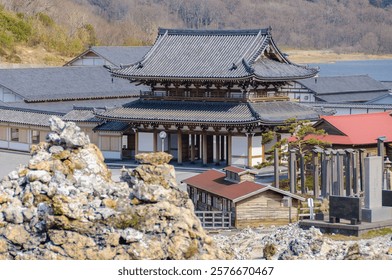
Sanzu Temple.
Main Highlights: What You Absolutely Can’t Miss
Sanzu Temple is a breathtaking cultural gem nestled on Fengxing Mountain in Qianshan County, Anhui Province. Here’s a guide to the main highlights that you absolutely cannot miss when visiting this historic site.
Architectural Marvels
1. The Majestic Halls
As you approach Sanzu Temple, you’ll be greeted by a series of impressive halls, each showcasing exquisite Chinese architectural design. Notable structures include:
– Mountain Gate Hall: The entrance to the temple complex, setting a grand tone for your visit.
– Heavenly King Hall: Home to stunning statues and intricate decorations that reflect the rich Buddhist traditions.
– Mahavira Hall: The heart of the temple, where you can witness worshippers and monks engaged in spiritual practices.
– Thousand Buddha Hall: Adorned with countless Buddha images, this hall is a visual feast and a reminder of the temple’s spiritual significance.
2. Jueji Pagoda
Standing tall within the temple grounds, the Jueji Pagoda is a remarkable structure that honors the third patriarch of Zen Buddhism, Sengcan. Climb to the top for panoramic views of the surrounding landscape, where the beauty of nature intertwines with the temple’s serene atmosphere.
Scenic Beauty
3. Enchanting Natural Surroundings
Sanzu Temple is not just about the buildings; its location amidst stunning natural landscapes adds to its charm. As you explore, you’ll find:
– Baihe Peak and Bailugang: These scenic spots offer wonderful views and are perfect for photography.
– Valley Springs and Stone Ox Ancient Cave: Wander through tranquil paths that lead to these natural wonders, where you can enjoy the sounds of flowing water and the rustling of leaves.
– Cliff Carvings: Discover ancient inscriptions that tell stories of the temple’s illustrious past, providing insight into its historical significance.
Cultural Richness
4. Historical Significance
Founded in the early Sui Dynasty, Sanzu Temple has a rich history that attracted scholars and poets throughout the ages. Notable figures such as Su Dongpo and Wang Anshi visited and left behind poetry that celebrates the temple’s spiritual essence. This cultural heritage is palpable as you walk the grounds, making it a haven for those interested in literature and history.
5. Lush Flora
The temple is enveloped by ancient cypress and pine trees, creating a serene environment that enhances your experience. Take a moment to breathe in the fresh air and appreciate the harmony between the temple and its natural surroundings.
Spiritual Experience
6. Meditation and Reflection
Sanzu Temple offers a perfect setting for contemplation. The peaceful ambiance invites visitors to meditate, reflect, and connect with the spiritual essence of the site. Whether you participate in a guided meditation or simply sit quietly among the ancient trees, this experience can be profoundly enriching.
Conclusion
Sanzu Temple is a must-visit for anyone traveling to Anhui Province. With its stunning architecture, rich cultural history, and breathtaking natural scenery, it promises an unforgettable experience that resonates long after your visit. Don’t miss the opportunity to immerse yourself in the tranquility and beauty of this remarkable site.
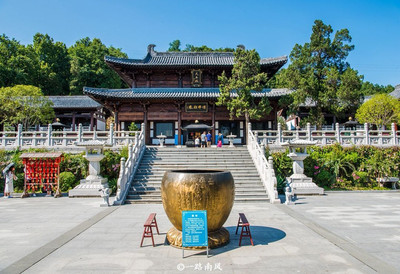
Sanzu Temple.
Planning Your Visit: A Practical Guide
When planning your visit to Sanzu Temple, located in the picturesque Fengxing Mountain area of Qianshan County, Anhui Province, you’ll want to ensure a memorable and enriching experience. This historic temple, steeped in cultural significance, offers a blend of natural beauty and architectural marvels that reflect the essence of Chinese Buddhism.
Getting There
Location: Sanzu Temple is situated on Fengxing Mountain, part of the Tianzhu Mountain range. The address is Fenghuang Mountain, south of Tianzhu Mountain, Qianshan County, Anqing City, 246000 China.
Transportation:
– By Air: The nearest major airports are Anqing Airport (AQG) and Nanjing Lukou International Airport (NKG). From these airports, you can take a taxi or prearranged transportation to reach Qianshan County.
– By Train: If you’re traveling from nearby cities, such as Hefei or Nanjing, consider taking a high-speed train to Anqing, then a local bus or taxi to Qianshan County.
– By Car: Renting a car might be the most convenient option. The temple is accessible via well-maintained roads, and driving allows you to explore the breathtaking landscapes along the way.
Best Time to Visit
Sanzu Temple is open year-round, but the ideal time to visit is during the spring (April to June) and autumn (September to November) when the weather is mild and the natural scenery is at its most vibrant. During these months, you can enjoy the lush greenery and beautiful foliage that surrounds the temple.
Visiting Hours
The temple is open 24 hours a day, allowing you to explore at your leisure. However, visiting during daylight hours is recommended to fully appreciate the stunning landscapes and intricate details of the temple architecture.
What to Expect
As you approach Sanzu Temple, you’ll be greeted by a harmonious setting that integrates rocks, plants, and water—hallmarks of traditional Chinese design. The temple features several significant structures, including:
- Mountain Gate Hall: The main entrance that sets the tone for your visit.
- Heavenly King Hall: Home to impressive statues of historical figures in Buddhism.
- Mahavira Hall: This hall houses an array of Buddha statues, each with its unique story.
- Thousand Buddha Hall: A remarkable space showcasing numerous Buddha images.
- Jueji Pagoda: A historical pagoda that adds to the cultural depth of the site.
- Patriarch Hall: Dedicated to the teachings and legacy of notable Zen masters.
Surrounding the temple are breathtaking natural landmarks, including Baihe Peak and the picturesque Qianshui River. The scenery is constantly changing, providing numerous spots for photography and reflection.
Cultural Significance
Sanzu Temple, founded in the 6th century, has been a spiritual haven for scholars and poets. Its rich history is evident in the inscriptions and artworks that adorn its walls. As you wander through the temple grounds, take a moment to appreciate the contributions of ancient scholars who sought enlightenment within these walls.
Nearby Attractions
After visiting Sanzu Temple, consider exploring these nearby attractions:
– Tianzhu Mountain Cliff Stone Inscription: An ancient inscription offering insights into the region’s history.
– Liandan Lake: A tranquil spot perfect for a leisurely stroll or a picnic.
– Tianzhushan Scenic Area: Ideal for hiking and enjoying panoramic views of the surrounding landscape.
Tips for Your Visit
- Dress Appropriately: Wear comfortable shoes for walking and dress modestly, as this is a religious site.
- Stay Hydrated: Bring plenty of water, especially if you plan on hiking in the surrounding areas.
- Respect Local Customs: Be mindful of the sacred nature of the temple. Speak softly and avoid disruptive behavior.
- Plan for Weather: Check the weather forecast before your visit and plan accordingly. Sunscreen and hats are advisable in sunny months.
Visiting Sanzu Temple is not just a journey to a cultural landmark; it’s an opportunity to connect with the history and spirituality of the region. Whether you seek peace, inspiration, or simply a beautiful place to explore, Sanzu Temple promises to be an unforgettable experience.
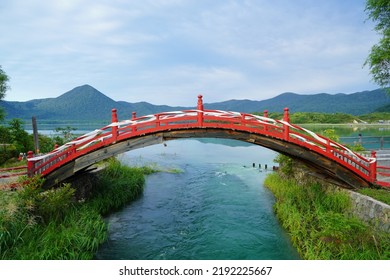
Sanzu Temple.
Tickets: Prices, Booking, and Tips
Visiting Sanzu Temple is a captivating experience, blending rich history with stunning natural beauty. Here’s everything you need to know about ticket prices, booking options, and helpful tips for your visit.
Ticket Prices
Admission to Sanzu Temple is generally very affordable, making it accessible for most travelers. As of 2025, the entry fee is approximately 30 RMB (around 4.50 USD). Keep in mind that prices may vary slightly based on the season or special events, so it’s a good idea to check local listings or official websites for the most current information before your visit.
Booking Information
No advance booking is typically necessary for visiting Sanzu Temple, as tickets can be purchased directly at the entrance. However, if you are planning to visit during peak tourist seasons or holidays, it might be wise to arrive early to avoid long lines. For those interested in guided tours, various local travel agencies offer packages that include transportation and a knowledgeable guide, which can enrich your experience.
Tips for Your Visit
-
Timing Your Visit: The temple is open 24 hours, but the best times to visit are during the early morning or late afternoon. This allows you to enjoy the serene atmosphere and take stunning photographs with the soft golden light.
-
Dress Appropriately: As Sanzu Temple is a place of worship, modest clothing is recommended. Comfortable shoes are also essential, as you will likely do a fair amount of walking on uneven terrain.
-
Explore the Surroundings: Take time to wander the beautiful botanic gardens and the breathtaking geological formations surrounding the temple. The scenery is particularly stunning and changes with every step you take.
-
Respect Local Customs: Be mindful of local customs and practices, especially during religious ceremonies. Silence and respect are expected in prayer halls and during meditation.
-
Capture the Moment: Don’t forget your camera! The combination of historical architecture and lush nature provides numerous opportunities for captivating photos.
-
Stay Hydrated: If you plan to hike around the temple grounds, bring water to stay hydrated, especially during the warmer months.
With its rich history and stunning views, Sanzu Temple offers an unforgettable experience for travelers seeking to immerse themselves in Chinese culture and spirituality. Enjoy your journey!
How to Get There: A Complete Transportation Guide
Embarking on a journey to Sanzu Temple, a remarkable cultural site nestled in the scenic Fengxing Mountain of Anhui Province, is an adventure worth every moment. Here’s a comprehensive guide to help you navigate your way to this historic gem.
Getting to Sanzu Temple
By Air
The nearest major airport is Anqing Airport (AQG), located approximately 40 kilometers from Qianshan County. This airport serves domestic flights and is your best bet for reaching the region. From the airport, you can:
- Take a taxi: Taxis are readily available at the airport. The ride to Sanzu Temple will take around 50 minutes.
- Book a car service: Pre-arranged car services can provide a more comfortable and hassle-free option.
If you’re flying internationally, consider landing at Huangshan Tunxi International Airport (TXN), which is about 120 kilometers away. From there, you can take a bus to Anqing or hire a taxi for a more direct route.
By Train
For those preferring rail travel, Qianshan Railway Station is well-connected to major cities in China. Here’s how to proceed:
- From major cities: Trains from cities like Shanghai, Beijing, or Nanjing frequently arrive at Qianshan Railway Station. Upon arrival, you can take a taxi or local bus to the temple, which is about a 30-minute drive away.
By Bus
Long-distance buses to Qianshan County operate from several cities, including Anqing and Huangshan. The Qianshan Bus Station is conveniently located in the town center.
- Local Buses: From the bus station, take a local bus or taxi to Fengxing Mountain, where Sanzu Temple is located. Buses run regularly, and the journey typically takes around 20-30 minutes.
By Car
If you prefer the freedom of driving, you can rent a car in nearby cities.
- Directions: Use a GPS or navigation app to guide you to Sanzu Temple. The drive from Anqing to the temple is approximately one hour, offering scenic views along the way.
Local Transportation
Once in Qianshan County, navigating to Sanzu Temple is relatively straightforward.
- Taxis: Taxis are widely available and can take you directly to the temple.
- Ride-Sharing Apps: Popular ride-sharing services may also operate in the area, providing a convenient option for international travelers.
- Walking: If you’re staying nearby, the temple is accessible on foot, allowing you to enjoy the beautiful surroundings at a leisurely pace.
Tips for Travelers
- Language: While some signage may be in English, having a translation app or a phrasebook can help ease communication with locals.
- Best Time to Visit: Sanzu Temple is open 24/7, but visiting during daylight hours will allow you to fully appreciate the stunning natural and architectural beauty surrounding the temple.
- Weather Considerations: Check the weather forecast before your trip, as conditions can vary significantly. Dress accordingly, especially if you plan to hike in the surrounding areas.
With this guide in hand, your journey to Sanzu Temple promises to be smooth and enjoyable. Prepare to be captivated by the serene beauty and rich history that await you at this unique cultural destination.
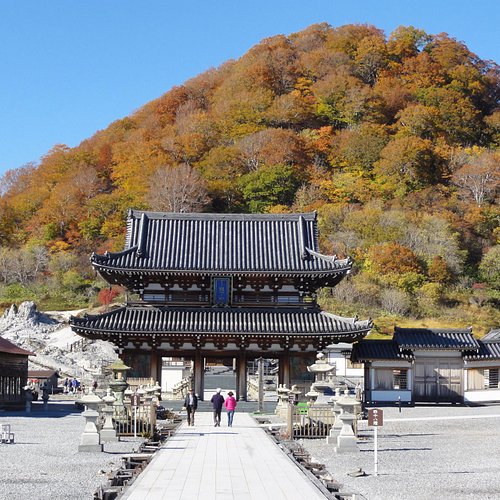
Sanzu Temple.
Local Cuisine and Accommodation Nearby
Nestled in the scenic beauty of Fengxing Mountain, Sanzu Temple is not only a cultural gem but also a gateway to experiencing the local flavors and hospitality of Qianshan County. After exploring the rich history and serene surroundings of the temple, indulge in the delightful local cuisine and find a cozy place to rest.
Culinary Delights
1. Local Restaurants:
-
ShanShiFang: Just a short walk from the temple, this charming eatery serves up traditional Anhui dishes that highlight the region’s rich culinary heritage. Don’t miss their signature dish, Steamed Bamboo Shoots, which perfectly showcases the fresh, local produce.
-
Liandan Lake Restaurant: Located near the picturesque Liandan Lake, this restaurant offers a stunning view along with a menu filled with seasonal specialties. The Fish Head Soup, made from locally sourced fish, is a must-try, especially after a day of hiking.
-
Wanjian Ancient Theater Café: For a unique dining experience, visit this café located near the historic theater. They offer a mix of light bites and traditional dishes, such as Braised Pork with Preserved Vegetables, all served in a quaint, artistic setting.
Accommodation Options
1. Qianshan County Hotels:
-
Tianzhu Mountain Hotel: Situated close to Sanzu Temple, this hotel provides comfortable accommodations with fantastic mountain views. Guests can enjoy modern amenities, along with a restaurant that serves delicious local cuisine.
-
Baimatan Scenic Spot Inn: For a more intimate experience, consider this cozy inn located near the scenic Baimatan area. With well-appointed rooms and a friendly atmosphere, it’s perfect for travelers looking to unwind after a day of exploration.
-
Qianshan Boutique Hotel: This stylish hotel combines modern comforts with traditional décor. Its central location makes it easy to access local attractions, and the on-site restaurant features a menu that highlights Anhui’s culinary traditions.
After a day of immersing yourself in the tranquility and beauty of Sanzu Temple, these local eateries and accommodations will ensure that your experience in Qianshan County is both delicious and restful. Enjoy the flavors of the region and the hospitality that makes this area a memorable destination.

Sanzu Temple.
Frequently Asked Questions
-
What are the operating hours of Sanzu Temple?
Sanzu Temple is open 24 hours a day, allowing visitors to explore its serene environment at any time. However, it’s advisable to visit during daylight hours to fully appreciate the temple’s beauty and surrounding landscapes. -
How do I get to Sanzu Temple?
Sanzu Temple is located in Qianshan County, Anhui Province, on Fengxing Mountain. The nearest major city is Anqing, from where you can take a taxi or a local bus to reach the temple. It’s recommended to check local transportation options or arrange a guided tour for a more convenient experience. -
Are there any entrance fees?
Currently, there are no entrance fees to visit Sanzu Temple, making it an accessible destination for all travelers. However, it’s always a good idea to check for any updates or changes before your visit. -
What should I wear when visiting Sanzu Temple?
Visitors are encouraged to wear comfortable clothing and shoes suitable for walking, as you will likely be exploring the temple grounds and surrounding natural beauty. Additionally, respectful attire that covers shoulders and knees is recommended, as Sanzu Temple is a place of worship. -
Can I take photos inside the temple?
Yes, photography is generally allowed in most areas of Sanzu Temple. However, be respectful of the spiritual atmosphere and avoid taking pictures during ceremonies or of individuals praying unless you have their permission. -
Are there any guided tours available?
Yes, guided tours of Sanzu Temple are available and can enhance your experience by providing historical context and insights into the temple’s cultural significance. You can find local guides at the entrance or book a tour online in advance. -
What are some nearby attractions to visit after Sanzu Temple?
After exploring Sanzu Temple, consider visiting nearby attractions such as the Tianzhushan Scenic Area, Liandan Lake, and the Suzhou Cliff Stone Inscription. These sites offer a mix of natural beauty and cultural experiences to enrich your visit. -
Is there any accommodation nearby?
Yes, there are various accommodation options in Qianshan County, ranging from budget-friendly hotels to more luxurious stays. It’s advisable to book in advance, especially during peak travel seasons, to secure your preferred lodging.
Final Thoughts on Your Trip
As your journey to Sanzu Temple comes to a close, take a moment to reflect on the profound beauty and rich history that envelops this sacred site. Nestled in the stunning Fengxing Mountain, Sanzu Temple is not merely a destination but a harmonious blend of nature and culture, where ancient texts carved into metamorphic rocks whisper tales of Zen masters and poets who found solace in its serene embrace.
Your visit offers more than just a glimpse into Chinese architectural brilliance; it invites you to connect with the essence of Zen Buddhism and the tranquility of the surrounding landscapes. Whether you wandered through the lush gardens or marveled at the intricate carvings, each step unveils a new layer of history and spirituality waiting to be discovered.
As you leave, carry with you the peaceful energy that lingers in the air, and let it inspire your journey onward. Sanzu Temple is a reminder of the beauty found in stillness and reflection, a treasure that will resonate long after you’ve departed. Until your next adventure, may the memories you forged here continue to enlighten your path.